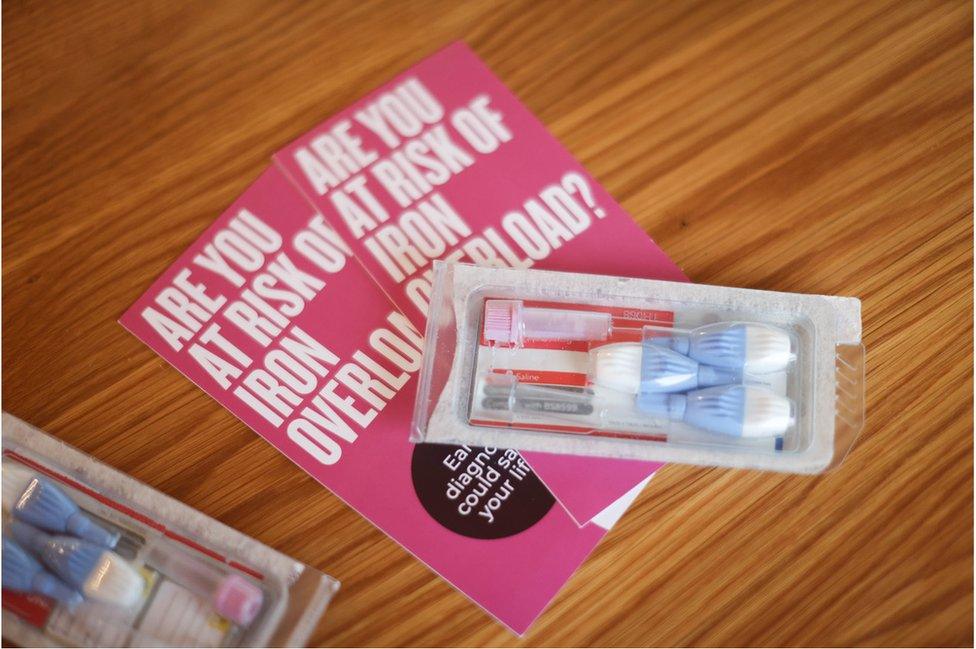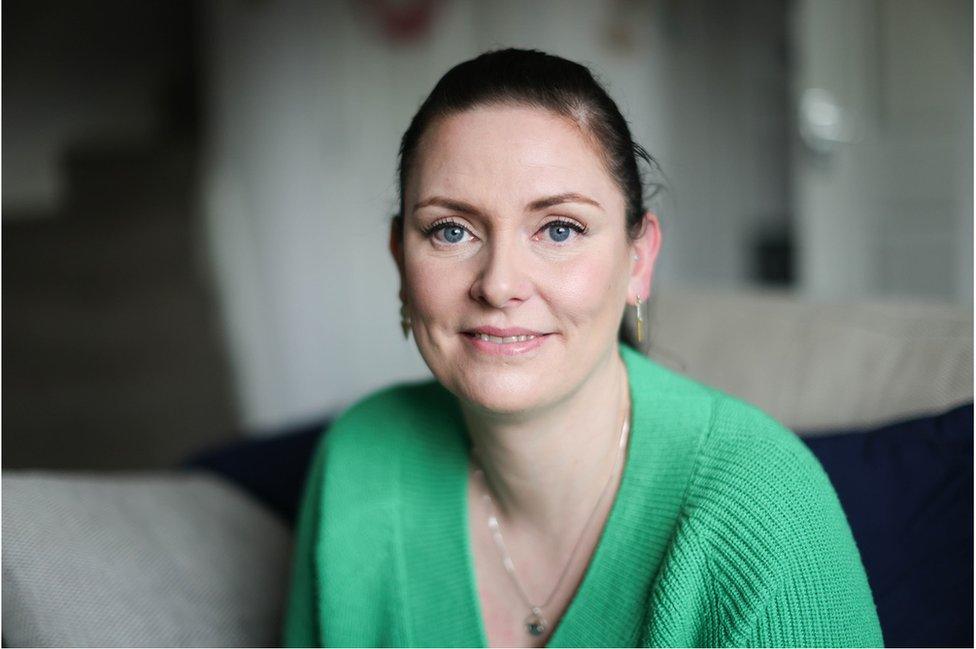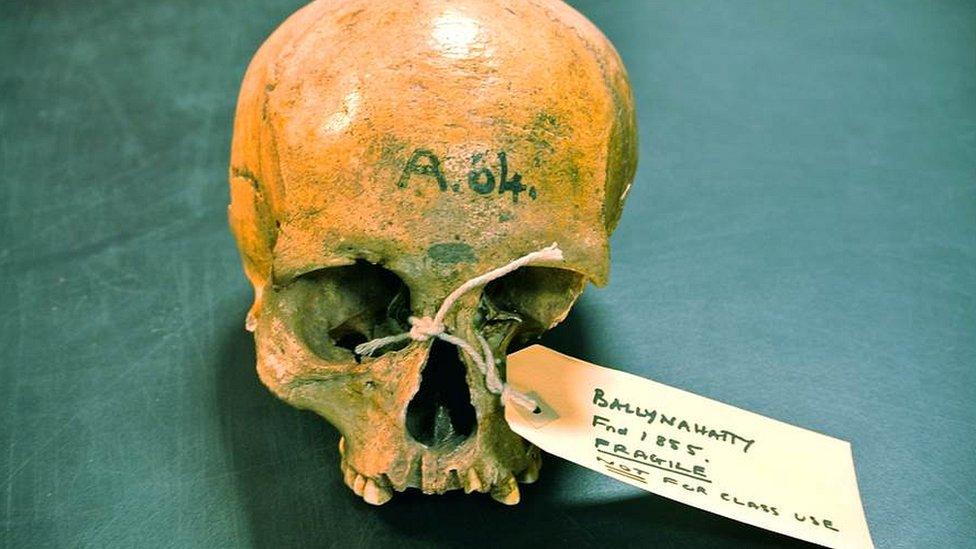Bereaved family push for 'Celtic Curse' screening
- Published

Miranda McHardy died last year after being diagnosed with genetic haemochromatosis
Thousands of people are being offered screening for a genetic disorder known as the Celtic Curse following the death of an Aberdeenshire woman last year.
Miranda McHardy, 59, from Banchory, died in March after a late diagnosis of genetic haemochromatosis, external, a condition which causes too much iron to build up in the body.
If untreated it can cause life-threatening complications including liver disease, cancer and heart disease.
The iron overload condition, which is caused by an inherited genetic mutation, is common in people of Scottish and Irish ancestry and is often called the Celtic Curse.
It is believed up to 1 in 133 people are at risk but it is widely underdiagnosed.

Miranda's brother Sir George Forbes-Leith was also diagnosed with the condition
Since Mrs McHardy's death her family and friends have been trying to raise awareness of the condition.
Screening of people in 25,000 households in north-east Scotland has begun, supported in part by money raised by her loved ones.
Iron overload
Mrs McHardy's brother, Sir George Forbes-Leith, was also diagnosed with the condition but he was at a much earlier stage.
He said the level of iron overload in his system was much lower than his sister, who had developed type 1 diabetes, arthritis and other conditions before her death.
The normal range for ferritin - a protein that correlates with the amount of iron stored in the body - varies by biological sex.
For men "normal" is between 30 and 300 mcg/l and for women it is between 30 and 200 mcg/l.
"Once levels hit 1,000 it starts affecting your organs," Sir George said.
"They got me at 900 but Miranda was at 5,500.
"Her iron levels were through the roof.
"All the symptoms she had - dodgy heart, dodgy kidneys - her major organs were just packing up."
How does screening for the 'Celtic Curse' work?

Mrs McHardy's family believe that if she had been diagnosed earlier, she would still be with them.
They hope families in Aberdeenshire will take the opportunity to be tested, and that others who think they may be at risk, seek advice.
Neil McClements, from Haemochromatosis UK, said the charity had sent tests to households in Aberdeenshire but would like to see them extended nationally.
"One of the risks of not testing people is that they go through life not realising that they have the condition and they get diagnosed later in life, when perhaps there's been irreparable organ damage, maybe damage to their liver or to their heart," he said.
"Or maybe they've developed diabetes as a result of iron overload affecting their pancreas. So it's really important to get people tested when they're younger."
What are the symptoms of haemochromatosis?
Common symptoms include:
Tiredness, fatigue and weakness
Joint pain particularly in the first two fingers
Liver disorders
Stomach pain or discomfort
Skin problems
Heart problems
How is haemochromatosis treated?
If detected early, genetic haemochromatosis, external is manageable.
As well as regular monitoring, patients can be offered a treatment called venesection which is a procedure to remove blood to bring iron levels down.
People with haemochromatosis can also give blood as long as their iron is at acceptable levels.

Laura Hebbert was diagnosed after finding her exercise routine was suddenly making her tired
Laura Hebbert, from Westhill, was diagnosed at the age of 35 after finding her usual exercise routine was suddenly making her need an afternoon nap.
"I am in a maintenance phase at the moment, so I go every three months to get my levels checked to see what they are like," she said.
"I went for my last venesection in November but I only required one and it brought me back into the normal ranges.
"They take half a pint which is the same as when you go and donate blood."

What is the Celtic Curse?

Excavated near Belfast in 1855, the Ballynahatty woman lay in a Neolithic tomb chamber for 5,000 years
The gene mutation that causes most cases of hereditary haemochromatosis is believed to have originated in the Celtic population of Europe.
It is most commonly found in people of Irish, Scottish, Welsh or Cornish ancestry.
DNA analysis of the genomes of a Bronze Age farmer on Rathlin Island in County Antrim showed that it was already established by that period.
Earlier still, the remains of a Neolithic woman found at Ballynahatty, near Belfast, show that she carried a different variant also associated with an increased risk of the disorder.